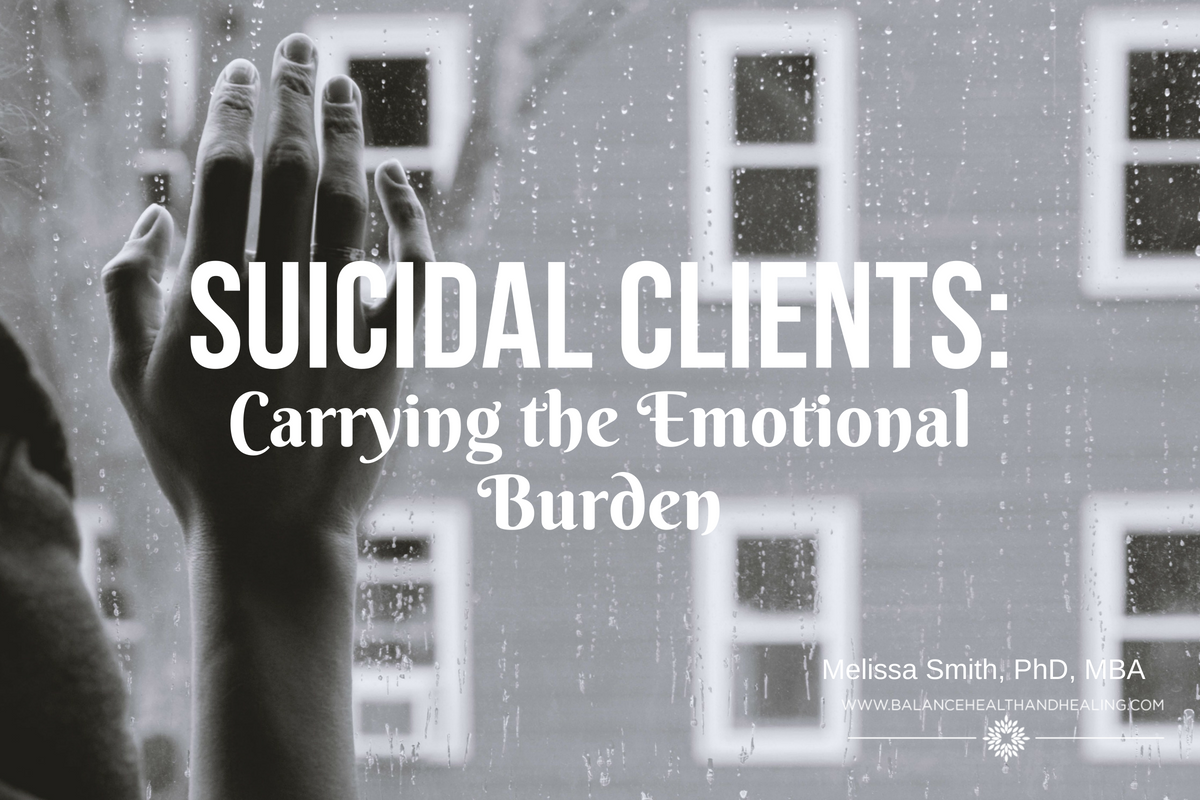Is it just me, or are we hearing and reading about suicide more these days? In recent weeks there has been a lot of news coverage of prominent individuals committing suicide, and most reports indicate that suicide rates are indeed rising in the United States. We need look no further than the Netflix series 13 Reasons to see that our society is intersecting with suicide more and more.
As clinicians, we are on the front lines of this epidemic. Sadly, the reported increase in suicide is no surprise to us, given the work we do. As I consider my own professional development, I have had times when I have felt terrified about the possibility of one of my clients suiciding (mostly as a graduate student), and have also had times when I felt numb to this potential reality.
Don’t get me wrong, I’ve never been laissez-faire when it comes to assessing suicidality, but I recognize that I’ve had to come to a sort of peace about the reality of clinical work and suicides. If you do clinical work long enough, you will most likely intersect with suicide or serious suicide attempts. If you haven’t, consider yourself very fortunate.
Impact on Clinicians
Though our graduate training has no doubt included extensive coverage of assessing and intervening with suicidal clients, most programs do not address the impact this work has on clinicians. If anything is said at all, it’s more of a shrug of the shoulders and a sentiment along the lines of “this comes with the territory.”
How do you cope with the reality of suicidal clients? Do you lean on the side of avoidance, furiously hoping if you don’t think about suicide you can somehow prevent it from happening? Or do you lean on the side of hyper-vigilance, jumping into a robotic suicide protocol at the first hint of hopelessness?
Most of us land somewhere in between those extremes. We hope it won’t happen, but must have our ears to the ground in order to thoroughly assess suicidality in our clients. We know better than to avoid discussing suicide with our clients, even while we may hesitate to directly address their concerns—and our own fears. Family members often look to us for guidance of how concerned they should be about their loved ones, and while we have many skills to offer, determining lethality continues to be an imprecise science.
Know the Risk Factors
Knowing the risk factors of suicide is a good place to start. A recent study identified some of the risk factors for a subset of military soldiers (Nock, et al., 2018). They identified a set of characteristics that predicted higher rates of suicide attempts among a group of suicide ideators, including recency of ideation onset, presence of a suicide plan, controllability of suicidal thoughts, and non-suicidal self-harm. The researchers suggested a potential algorithm of risk factors that can help clinicians more accurately predict those individuals at greatest risk to attempt suicide. While the study is preliminary and may not be generalizable to other populations, it does hold promise for more accurately identifying risk factors of individuals with suicidal ideation.
I have found that knowledge is power, even in situations that can leave clinicians and loved ones feeling helpless. Knowing the research helps. Utilizing effective assessment tools helps. Having a strong therapeutic alliance helps (see the Quick Note on Research in our newsletter for a recent study outlining the importance of interpersonal relationships).
I’ve also found that relinquishing a sense of control can help. As clinicians, we are invested in helping others and we tend to like to be in charge. But when it comes to most mental health concerns—suicide chief among them—though we can actively assess, intervene, and treat, at the end of the day we may not be able to prevent poor outcomes. Despite our best efforts, we may not be able to keep our clients safe. This is a sobering realization, but one that can move us out of fear and avoidance, and toward active engagement.
Finding Support
Focusing on clients’ interpersonal relationships should be a priority when it comes to suicidality. As mentioned, a recent study indicated that a focus on understanding one’s relationships, utilizing the therapeutic alliance, and enlisting appropriate support can make all the difference for preventing suicide attempts. As clinicians, we must be willing to move outside the therapy office by engaging loved ones. Our suicidal clients benefit when we address their interpersonal conflicts and stressors (Stulz, et al., 2018).
Identify community supports for suicide. Does your community have a crisis hotline? A warm line? A mobile crisis team? Identify resources and ensure your clients and their family members are aware of these resources and feel empowered to utilize them as needed. Clients take an important step in sharing their suicidal thoughts in session, but as clinicians, we should not be carrying this burden alone.
It’s important that clinicians don’t go it alone. Seek out consultation with peers you trust. It’s okay to address your fears and to speak openly about your interventions in the context of case consultation. Attend trainings specific to suicide. While these can be challenging trainings that most of us would prefer to skip, they can provide valuable information to help clinicians approach suicidality in a more grounded way.
Resources
Nock, M.K., Millner, A.J., Joiner, T.E., Gutierrez, P.M., Han, G., Hwang, I., Kessler, R.C. (2013). Risk factors for the transition from suicide ideation to suicide attempt: Results from the army study to assess risk and resilience in service members (Army STARRS). Journal of Abnormal Psychology, 127, 139-149.
Stulz, N., Hepp, U., Gosoniu, D.G., Grize, L., Muheim, F., Weiss, M.G., & Riecher-Rossler, A. (2018). Patient-identified priorities leading to attempted suicide: Life is lived in interpersonal relationships. Crisis: The Journal of Crisis Intervention And Suicide Prevention, 39, 37-46.
Suicide Thoughts by Dr. Sierra Baird


